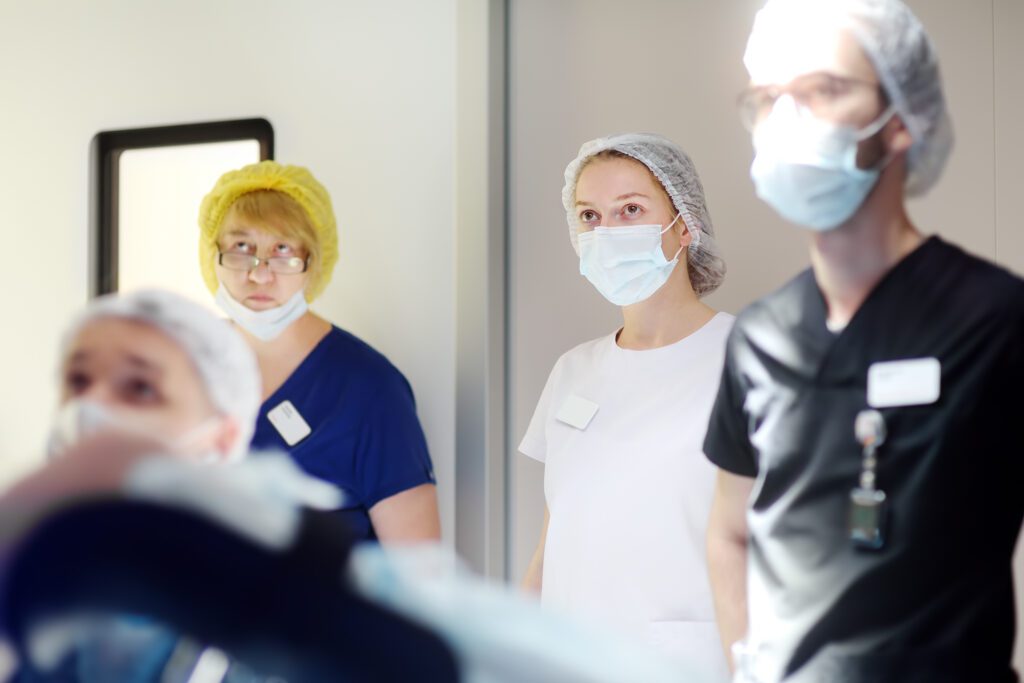Choosing the Preliminary Year Residency Position That’s Right For You
- by
- Sep 21, 2023
- Reviewed by: Amy Rontal, MD

Choosing the right path in your medical career is a critical decision that requires careful consideration. One option that often raises questions among medical students are about preliminary year residency programs, which serve as a year to build a solid foundation within various specialties (such as radiology, dermatology, anesthesiology, and more) before starting residency as a PGY2.
If you’re feeling overwhelmed about how to choose a preliminary year that works for you personally and professionally, breathe a sigh of relief! In this blog, we’ll discuss the factors that go into choosing a preliminary year residency, and examine some things to keep in mind if you’re applying for an advanced position or ranking preliminary spots in case you don’t match.
Why Consider a Preliminary Year Residency Program?
Some specialties require the successful completion of a preliminary year before starting residency as a PGY2 (find a full list here). The path to completing this year can work in a couple of different ways:
Path 1: On match day, some students applying for these residencies will match into a preliminary position to start that year as well as an “advanced” position in their desired specialty they’ll start the year after.
Path 2: Other residency applicants choose to apply to preliminary years in addition to applying to their full categorical programs (like general surgery or internal medicine) as backups in case they do not match their categorical program.
Regardless of whether you are matching into an advanced position or applying for a preliminary year in case you don’t match, there are several types of preliminary year residency programs for you can choose from, including internal medicine, transitional year, and general surgery. Less commonly, there are pediatric and even a handful of OB/GYN prelim spots, though these positions usually fill with applicants who did not match successfully into an OB/GYN categorical spot.
Factors to Consider When Ranking Preliminary Residency Programs
Path 1: Applying for a Preliminary Year to Complete an Advanced Position
If you’re on “path 1” and are looking to match into a preliminary year residency position that leads into an advanced position the year after, here are some factors to consider:
1. Location
This is one of the most important factors! Consider what’s important to you. Is it being close to your family or a significant other? Or matching in the same location as your advanced position so that you don’t have to move the following year? You can arrange your rank list to preference matching at a certain preliminary program if you match at a certain advanced program.
Pro tip: if this is a priority for you, email preliminary programs in the cities you get advanced position interviews. This frequently works because preliminary programs get a lot of applications and it’s hard to sift through them all. If you already have an advanced position interview in the area, there is a chance you will end up matching there, so they’re more likely to give you a prelim interview.
2. Type of prelim
Preliminary medicine years tend to be wards heavy, meaning that you will work a lot (average 6 days a week), likely at the same level as a categorical medicine PGY1. This definitely is the case with a surgical prelim year—there will be lots of hours and lots of work.
If you’ll be miserable on wards or surgery, maybe reconsider this option and try to opt instead for a transitional year. Transitional years are a bit more spread out, with a mix of a few months of wards, surgery, clinic, electives etc. Transitional years are known to be more laid back (some more than others), so they also tend to be on the more competitive side. If you want to be well-prepared for a more surgical field or even anesthesia, a surgery prelim may be the best option.
3. Moving for your advanced position
At the end of the year, you will need to move for your advanced position, likely before June 30th. Some programs require that you save a week or two of your vacation time to account for moving and starting your advanced position. Others just end your contract early so you can move. You’ll want to know what a program’s policy is in this regard, so be sure to ask them.
Path 2: Applying for a Preliminary Year in Case You Don’t Match
Conversely, if you’re on “path 2” and are seeking a preliminary year in case you don’t match, when you submit your rank list at the end of interview season, you’ll be able to rank preliminary years alone at the end of your list. This is a common backup plan, and usually these candidates re-apply during intern year.
If this describes your situation, here’s some things you’ll want to keep in mind:
1. Advanced programs at the institution
When you rank preliminary programs at the end of your rank list, prioritize the ones that have a residency in the specialty of your choice at that institution. For example, if you didn’t match into anesthesia, try to match at a prelim year that has an anesthesiology residency you can network/rotate with and potentially match at or get letters/support from.
2. Track record
Some institutions have a lot of preliminary spots. For example, if you don’t match into general surgery, you will ideally do a preliminary surgery year. Do your research/ask around to see if the institution historically takes their preliminary residents on as categoricals the following year and if not, do they have a track record of supporting their preliminary applicants?
3. Do what will help you match
In general, if you don’t match, many program directors will say they prefer an internal medicine/surgical/pediatrics preliminary year to a transitional year. Transitional years are just historically more laid back, and some programs will prefer that you do a rigorous year of training. This applies to positions with advanced residencies (dermatology, anesthesia etc) as well.
Additionally, make sure to choose a prelim year that makes sense for your career path. For example, if you want to match a surgical specialty, do a surgery prelim year. It does not make sense to do a medicine prelim in this case as it won’t help you in any way. Always to what’s best for you and use your prelim year as a strategic opportunity to advance your career.
Further Reading
These are some of the main factors to consider when choosing preliminary year residency positions, which hopefully will serve as a guide as you go through interview season. Keep in mind the different guidance for those seeking a preliminary year plus an advanced residency vs. those who are ranking preliminary years in case they don’t match. And be sure to contact the residency advisors at Blueprint in case you need further assistance. Best of luck!
If you’re looking for more (free!) content from Blueprint tutors, check out these other articles on the Med School blog!
About the Author
Navin studied Biochemistry at Santa Clara University, attended Georgetown University School of Medicine, and is a current resident physician at the Internal Medicine Residency at TriStar Centennial Medical Center 2. Navin has been working for Blueprint since 2020 and has general interests in medical education, trends in medicine, and wellness.









